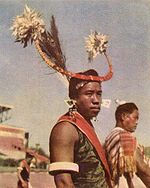
 (Held annually January)
(Held annually January)
Popularly known as the Land of Festivals because of the countless festivals that take place year round, Myanmar is still a country for discovering remote tribes. Festivals are closely intertwined with Buddhism centering around a spiritual focus of gratefulness and prayer for good over evil. Each January the Naga ethnic tribe’s New Year Festival takes place in the far northern region of Myanmar. This festival brings all Naga tribes of the entire region together to celebrate their harvest and pray for a good new year. Visit other hilltribes nearby. Stay in traditional tent and try local foods and rice wines. Hear ethnic songs and participate in the New Year ceremony. Naga Festival Myanmar is the best opportunity for you to visit the remote Naga region and to experience one of Asia’s last authentic events of traditional culture and custom.
Travels with Teri is one of the only USA travel companies who is accredited with Myanmar ground operators to sell this tour. This tour is required by law to be booked through an approved certified travel professional with permission to attend granted by the government of Myanmar
Day 1 – Depart Yangon/ Mandalay/ Homalin/Htamanthi/Leshi
Take a flight from the Yangon Airport to Homalin via Mandalay.
Enjoy lunch and refreshments on a four hours long shuttle boat trip with breathtaking views from Homalin to Htamanthi on the Chindwin River. See panoramic scenery of Naga Hills along the road from Htamanthi to Leshi on your drive through Myanmar’s north hills. Dinner and night rest at Traditional “House” or tent in Leshi.
Homalin is a remote, small town in northern Myanmar which lies close to the Indian border, at the head end of a bend in the Chindwin River. It has the backdrop of large forested mountains, which rise to a height of 9,000 feet. Leshi is located in the far northwest region of Myanmar. It is home to the Naga tribe and is 25 kilometers from the Indian border and 100 kilometers from Htamanthi.
Tamanthi Wildlife Reserve is a wildlife reserve located in this region and is a sanctuary to tigers, elephants, gaur (Asiatic bison), leopards, serow, and bear. Folklore has the area as a home for Werecats or tigers, who appear to hunters as beautiful young girls in the day time, only to become ravening beasts at night.
Nagas
The most unique, traditional items that can be found in almost all of the Naga tribes and that distinctly separate Nagas from other tribes are the Conical red headgear decorated with wild-boar canine teeth and white-black Hornbill feathers, the spear with the shaft decorated with red-black hairs and the unique Dao with broad blade and long handle. Before the 19th century they were known to be headhunters and preserved the heads of enemies as trophies.
The Naga tribes are expert craftsmen. Each tribe has a different way of constructing their huts. A common practice among all the tribes is decorating the entrances of their dwellings with the heads of buffaloes. The Naga people love color and this is evident in their shawls and headgear. The designs on the costumes are unique to each tribe.
Folk songs and dances are essential ingredients of the traditional Naga culture and it is through oral tradition that folk tales and songs are kept alive. Naga folk songs are both romantic and historical, with songs narrating the stories of famous ancestors and incidents. There are also seasonal songs which describe various activities done in a particular season.
Day 2 – Leshi
Take an excursion to nearby villages after breakfast. Lunch boxes can be ordered at the Reception and Information Counter beforehand. An informative video feature on Naga culture will be shown after dinner.
There are numerous Naga hilltribes and their subgroups of Angkul, Nauk-aw, Laing Nang, Hyein Myay, Pain Kuu, Para, Makuri, Smmara, Pon Myo and Kyan Naga living in these northern hills.
Day 3 – Leshi
Take part in the Naga Traditional Pole Erection Ceremony in the morning. Enjoy the Auction Show of Naga traditional household goods in the dining hall after lunch and participate in other related festivities.
Naga Festival
Nagas cultivate various crops, which is their main source of livelihood. They live nomadically and shift from one hillside to another to set up their villages when the soil becomes depleted. After harvesting their crops, the Nagas celebrate their New Year Festival and welcome the next season. This festival is a social event, but is also to share previous year experiences and to make plans for the upcoming one. The festival is a time to discuss how to overcome difficulties. The Nagas pray for abundant crops, good health of their domestic animals and for good weather. Another aspect of this festival is the family reunion.
In ancient times, this festival was held in every village. Nowadays, the Naga Tribal Committee has chosen one celebration site where the festival is to be held on January 15. All tribes taking part in the festival congregate at this site. Naga songs and dances depict the history of how Naga tribes lived harmoniously and the festival is a way of renewing that harmony. This festival has become state-sponsored for the benefit of tourism and limited to Leshi (and Lahe) since 2003.
Day 4 – Leshi
After breakfast, take your place on the festival grounds to attend the opening ceremony of Naga Traditional New Year commencing at 8:30 am. In the evening, enjoy the Naga traditional food and rice wine and take part in the welcoming Naga New Year dancing around the bonfire.
Day 5 – Depart Leshi/Yangon
Depart Leshi at 5:00AM and begin your journey back to the airport for your departure flight to Yangon.






